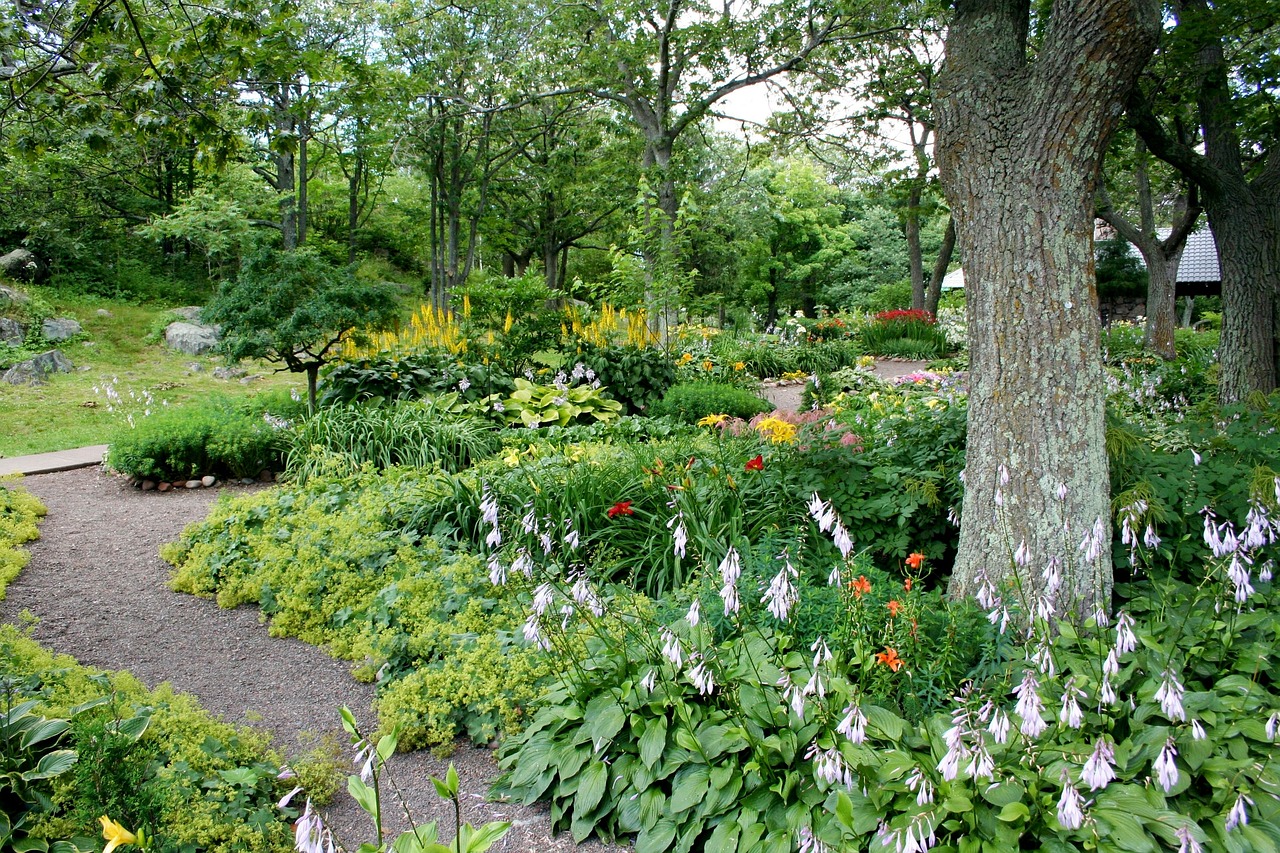Asymmetrical vs. Symmetrical Gardens: Which Landscape Design Is Right for You?
When it comes to landscape design, there are numerous styles to consider. Each design type has unique advantages and drawbacks, from asymmetrical to symmetrical.
Achieving balance is crucial to creating a visually pleasing and harmonious environment, regardless of whether you opt for a symmetrical or asymmetrical design. It’s also important to note that symmetry isn’t necessarily better than asymmetry.
Ultimately, the choice between asymmetrical and symmetrical landscape design depends on your preferences and the layout of your home’s outdoor space. In this blog post, we’ll explore the significance of balance in asymmetrical and symmetrical garden designs and offer tips on achieving it for the perfect outdoor sanctuary.
Why Achieving Balance is Vital in Landscape Design
Whether you pick a symmetrical or asymmetrical landscape design for your Bucks County outdoor space, you must achieve balance in the master design.
For example, if you plant a boxwood on one side of your walkway, you need a second boxwood of the same cultivar grown directly on the other side so they mirror each other for symmetry.
Read more: The Importance of Inquiring Early for a Quote on Landscaping
Likewise, you can achieve balance with asymmetrical design by ensuring that both sides of the walkway have the same balanced density and weight.
It doesn’t need to be two boxwoods mirroring each other. It could be impatiens on one side and begonias on the opposite side—different plants but similar in weight and density.
Symmetrical Garden Design
While symmetrical gardens are known for their formal and balanced appearance, asymmetrical gardens offer a more relaxed and informal feel.
Formal and Balanced Appearance
Symmetrical gardens are more formal in appearance. Symmetrical landscapes include geometric shapes and lines. What you plan on one side, you grow on the other, so there’s always equality.
To make your garden feel well-balanced and inviting, it’s essential to create a harmonious space so guests feel relaxed and can explore your landscape.
You achieve balance in your Jamison garden by including various elements like open spaces, planting beds, sources of light and shade, privacy, a mix of colors and textures, dynamic movement, and unique features that give it character.
You can add hardscapes, such as walkways and patios. Put benches in your garden so your friends can relax. But everything must have an order to it.
Rigid and Lack of Natural Appeal
As you might guess, symmetrical landscape design can be rigid and lacking natural appeal. For example, boxwoods would be pruned into balls; hedges would be straight walls, and nothing would be out of place.
And symmetrical gardens don’t do well for kid areas, either. You’ll need regular landscaping services to keep your garden layout formal, so there won’t be much playing tag or soccer in the front- or backyard.
Learn more: Lawn and Garden Trends 2023
Another drawback to symmetrical landscape design is the high maintenance of a formal garden. Shrubs and trees need regular pruning to keep their geometrical shape and symmetry.
Asymmetrical Landscape Design
Asymmetrical landscape design is more casual and makes the garden design simpler. You can also use more native plants in an asymmetrical design and less maintenance when it comes to pruning and trimming.
Relaxed and Informal Feel
Asymmetrical garden layouts are informal. You still need to achieve balance, but you can do that with different types of plantings rather than the same plants mirroring each other.
You can incorporate more ornamental grasses and flowering shrubs that don’t need constant attention with the pruners to keep them in a particular shape.
Natural and Organic Appeal
Asymmetrical garden design can have flagstone walkways with more curves. There aren’t any distinct shapes with asymmetrical flowerbeds, either. The look is softened with fewer hard edges.
Asymmetrical Can Be Messy
One of the drawbacks of an asymmetrical design is its messiness. If you don’t plan where beds will go and how to put in plants that make for a visual appeal, you’ll create chaos instead.
Your friends and family won’t know where to look because no focal point is seen or unseen. It’s mismatched instead, and the brain can’t understand what it sees.
Bringing It All Together with Jamison Lawn Care
At Jamison Lawn Care, we provide a balanced garden design, whether you want a more formal look with symmetrical flower beds or a more natural, soft look with an asymmetrical garden design.
We serve homeowners and commercial properties in Buckingham and Warwick Townships, including these Pennsylvania towns: Chalfont, Doylestown, Furlong, Hatboro, Horsham, Jamison, Southampton, Warminster, Warrington, and Warwick.
Call us today at 267-621-4747 or fill out our contact form to schedule your asymmetrical or symmetrical garden design appointment.
Sources:
GardensIllustrated.com, Garden Design Tips: Finding Balance in the Garden.
GardeningKnowHow.com, Asymmetrical Garden Design—Learn About Asymmetrical Landscaping.
GardenTutor.com, Symmetry: Formal vs. Informal Gardens.
PrettyPurpleDoor.com, How to Balance an Asymmetrical Landscape (with Illustrations).





